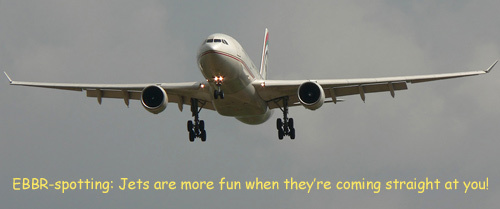If the cost of getting a connecting flight is considerably cheaper than getting one direct then people will choose the cheaper option. With the Airbus A380 a huge number of people can be moved in one flight which will make ticket prices cheap incomparison to all twin engined planes and even the 747. And when it comes to flying across oceans, you rarely have the chance to choose your precise destination. The A380 will do very well.
The cost per passenger-mile on the big planes is indeed cheaper than for the small planes making hubbing apear to be the cheapest option. But there are business considerations that makes this obvious choice (hubbing versus direct flights) not necessarily the best choice. Hint: it's the reason SoutWest is successful whereas the longtime airlines (USAir, United, etc) are struggling.
Flying passengers to local hubs, then splitting them off on big airplanes over long distances to other local hubs can be enormously efficient. It works very well for cargo and, when demand is high and consumers don't have options of direct flights, it works well with people.
But it's only cheap to do when the long haul routes are full of passengers. I flew from Boston to Denver (I may have the destination wrong) on a half full 747. That flight wasn't exactly the lowest cost way to get me and my fellow passengers where we were going. By the same token every SouthWest flight I've ever taken has been at least 80% full. It's cheaper to fly two full small planes than it is to fly two half full big planes.
There are other considerations. The first is pricing pressures: the cost to fly a plane is disconnected from what you charge your passengers. You charge your passengers as much as they're willing to pay for your flight. This is determined by who your passenger is (business vs. pleasure travel), where they're flying from and to and at what time, and how you get them there. You can charge a bit more for getting them there direct and fast than you can by forcing them to wait in Atlanta for an hour between flights. So direct to destination flights can be priced higher than hub flights.
So, partially full hub flights puts hubbing closer in real costs to direct flights, and you can charge more for direct flights because people like them more. The SouthWest business model looks better and better. Enter some competition in to the mix...
...if the direct to destination carrier wants to go after market share they only need to match the hub carrier's prices to steal that share, vs undercut the price. I know when I look at flights I always choose the direct if it's the same price. That fills seats on the direct to destination flight and empties seats on the jumbo flying between hubs. And the whole hub scheem starts to crack at the seams when the cost (not price, remember price is determined by the customer, cost by the supplier, and price-cost=profit or loss) inches up over the cost to fly direct. (Oh, and by the way, overcrowded central hub airports are more expensive to fly in and out of.) Which is exactly where we are today. Major airlines are invested in hubbing in the name of economy but can't compete in price or service with direct to destination airlines like SouthWest. So they squeeze the cost out of there people to try and make up the difference.
It's hard to see the forrest through the trees when you're an exec in one of those companies. But Boeing knows full well who's doing well and what platforms they'll need in the future. IMO Airbus is too tied up in the European market to feel the winds of change going on on this side of the 'pond. But eventually Europe will have it's own SouthWest revolution when some upstart airline starts offering low cost direct to destination service through smaller airports.
Then who'll buy the A380? There'll still be a market for those routes where flying direct will never make sense: trans oceanic, Europe or America to Asia, etc. And cargo hubbing will work well for a long time to come (cargo doesn't care about connecting flights and there's enough of it around so filling a A380 with stuff isn't a problem). But the market is shrinking and destined to shring further yet.
Cost per passenger seat mile is only a real number when all the seats are full and passengers want to fly to those destinations...











 )
)